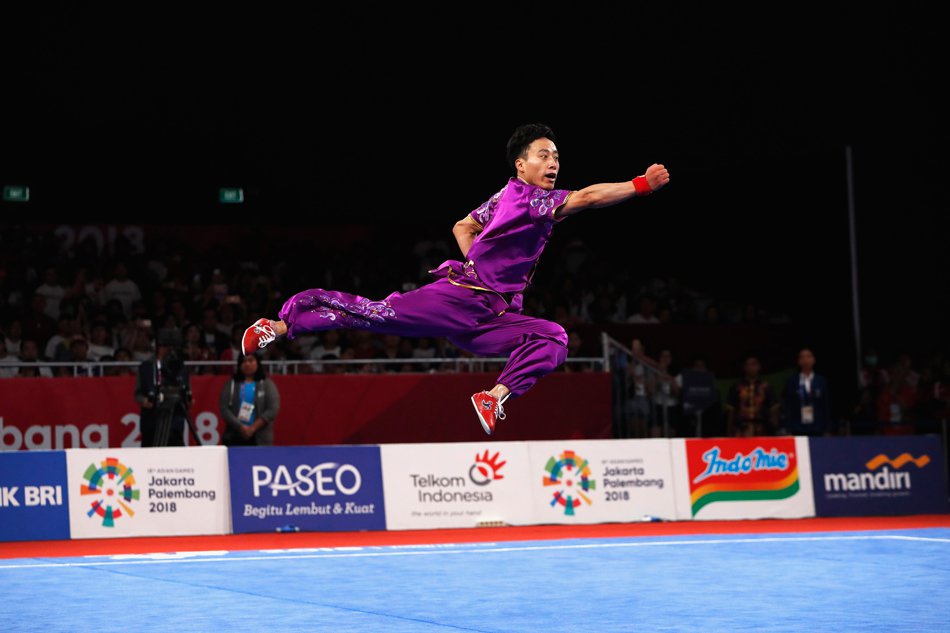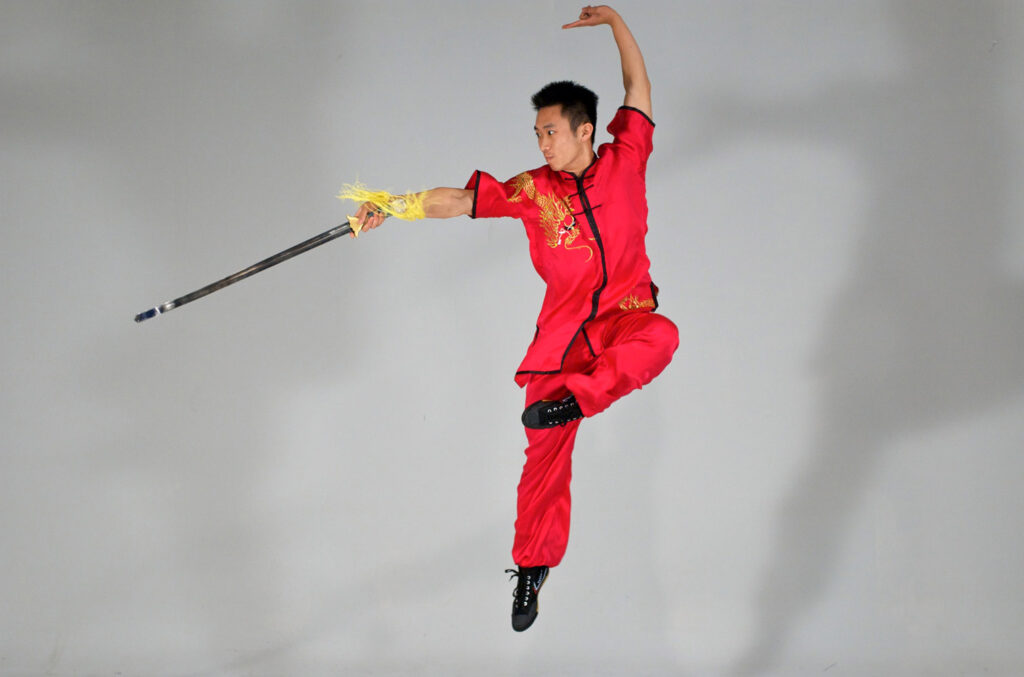Wushu literally translates as Fighting (Wu) Method (Shu) so can refer to any kind of Chinese Kung Fu, and this is usually how the word Wushu is used in China. However, in the West, when we say Wushu, we are usually referring to the spectator performance oriented style of kung fu where people train to deliver eye-catching athletic displays of supposed martial arts techniques without so much focus on understanding or finetuning those moves for actual combat. It’s as much a performing art as a martial art, and while some schools still train combat applications of their moves, most do not.

Wushu in the UK is especially popular among niche groups of athletic young men and women who are also often into things like tricking, parkour/freerunning and breakdancing.
Wushu performers are typically very acrobatic and dynamic in their movement. There’s plenty of jumping and posing in stretched and even contorted positions to mimic extreme martial arts techniques. Alongside jumping and kicking and punching, there’s some running and spinning, handstands and flips, etc – much like mat-based gymnastics performances but often with near-sharp weapons and a slightly different kind of music.

Wushu performers are often assisted by an arsenal of traditional Chinese martial arts weapons, and in modern competitions their forms (sequences of moves) are often performed with backing music.
There’s some very high and very low stance positions – lots of traditional Chinese kung fu stance work to add altitudinal dimension to the performance.